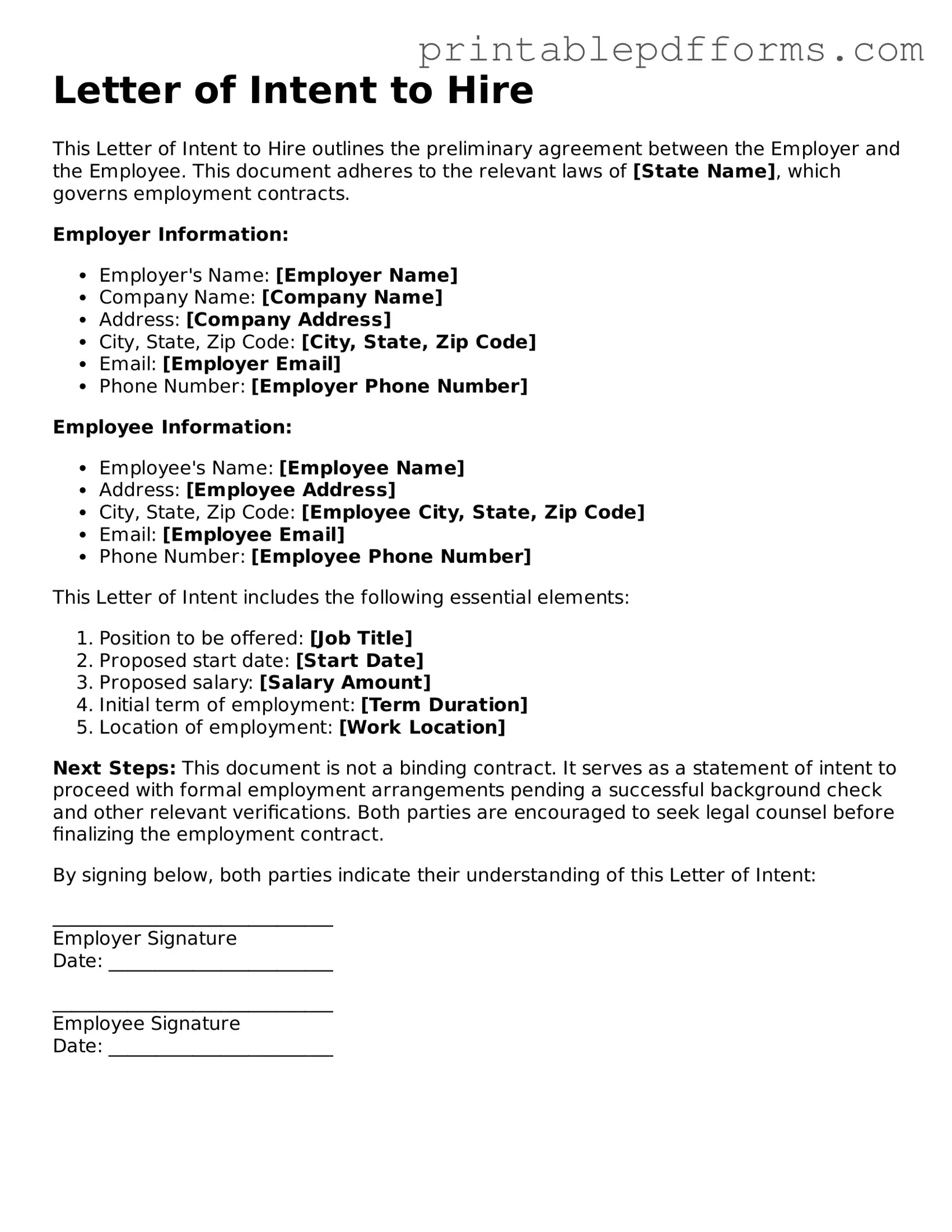What is a Letter of Intent to Hire?
A Letter of Intent to Hire is a document that outlines an employer's intention to hire a candidate for a specific position. It serves as a preliminary agreement between the employer and the candidate, detailing the terms of employment before a formal job offer is made.
Why is a Letter of Intent to Hire important?
This letter is important because it helps clarify the expectations of both parties. It can provide the candidate with reassurance about the job offer and outline the key terms, such as salary, start date, and job responsibilities. It can also serve as a record of the employer's commitment to the candidate.
What should be included in a Letter of Intent to Hire?
A well-crafted Letter of Intent to Hire should include the following elements:
-
The name and contact information of both the employer and the candidate
-
The position being offered
-
The proposed start date
-
The salary and any benefits
-
A brief overview of job responsibilities
-
Any conditions that must be met before employment begins
Is a Letter of Intent to Hire legally binding?
Generally, a Letter of Intent to Hire is not legally binding. It is meant to express intent rather than create a formal contract. However, it is still important to approach it with care, as it can set expectations for both parties.
When should a Letter of Intent to Hire be sent?
This letter should be sent after the interview process has concluded and both the employer and candidate have agreed on the terms of employment. It typically precedes the formal job offer and contract signing.
Can a candidate negotiate terms after receiving a Letter of Intent to Hire?
Yes, candidates can negotiate terms after receiving a Letter of Intent to Hire. It is a good opportunity for candidates to discuss any concerns or preferences they may have regarding salary, benefits, or other employment terms before the final offer is made.
A Letter of Intent to Hire is a preliminary document that expresses intent, while a formal job offer is a legally binding contract. The formal offer typically includes detailed terms and conditions, and it is usually accompanied by an employment agreement that both parties must sign.
What happens if the terms in the Letter of Intent to Hire change?
If the terms in the Letter of Intent to Hire change, it is important for the employer to communicate these changes to the candidate as soon as possible. A revised letter may be issued to reflect the new terms, ensuring both parties are on the same page.
Can a Letter of Intent to Hire be rescinded?
Yes, an employer can rescind a Letter of Intent to Hire before a formal job offer is accepted. However, it is advisable to do so with caution and clear communication to avoid misunderstandings or damage to the employer's reputation.
Where can I find a template for a Letter of Intent to Hire?
Templates for a Letter of Intent to Hire can be found online through various legal document websites. It is essential to choose a template that fits your specific needs and to customize it to reflect the details of the job and the agreement between the employer and candidate.
